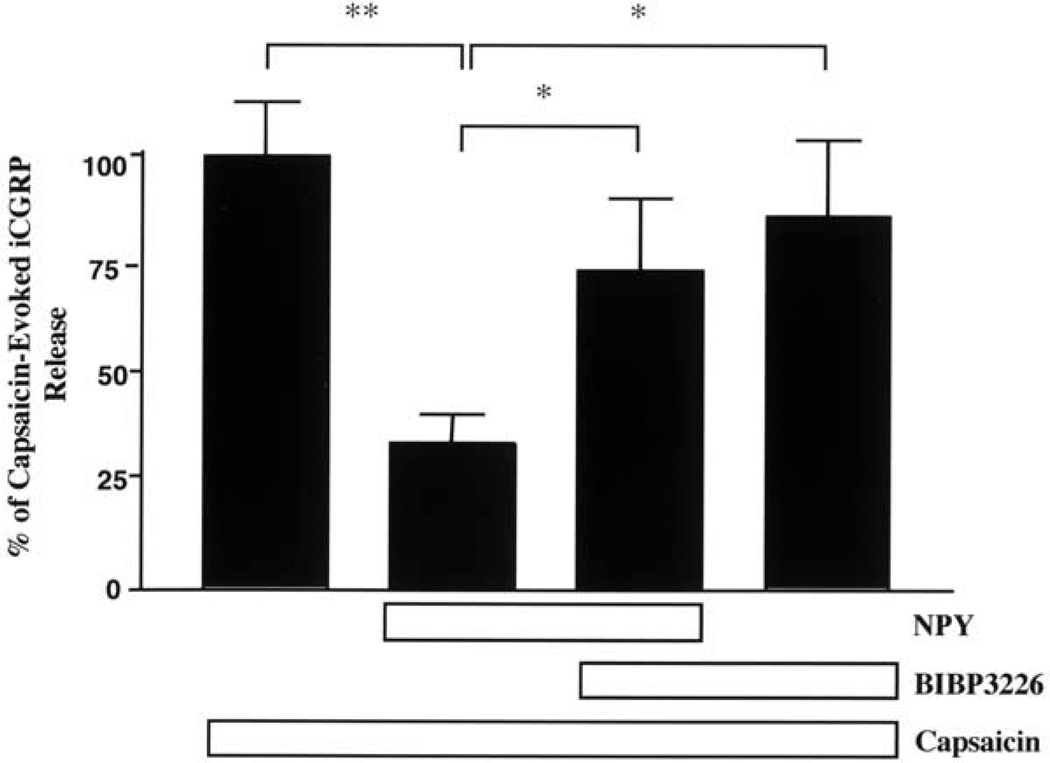Fig. 4.
Effect of NPY±the Y1-R antagonist BIBP3226 on capsaicin-evoked iCGRP release from the dorsal half of rat lumbar spinal cord. Tissue was collected, pooled, and then superfused. After equilibration, the tissue was treated with vehicle or 30 nM BIBP3226 for 3 min (fraction 4). Tissue was then treated with vehicle, 3 nM NPY/30 nM BIBP3226 or 3 nM NPY/vehicle for 3 min (fraction 5). Tissue was then stimulated with 300 nM capsaicin in the presence of the pretreated drug or vehicle for 3 min (fraction 6). Superfusate was assayed using radioimmunoassay for immunoreactive CGRP. Data are presented as mean±S.E.M. Post hoc test with Newman-Keuls multiple comparison test with P<0.05 (*; NPY/Cap vs. BIBP3226/NPY/Cap) and P<0.01 (**; NPY/Cap vs Cap). None of the other effects were statistically significant.

